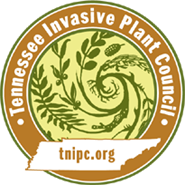Sorghum halepense (L.) Pers.
Johnson Grass| Threat Level | Category |
|---|---|
| Established | Grass |

Description
Stem
Grows to a height of 6 to 7 feet at maturity.Leaves
Leaves are arranged alternately along a hairless, upward branching stem and have a distinct, white mid-rib.Flowers
Blooms from May through October. The flower head is large, open, well branched and has an overall pyramid outline. Initially, it is green or greenish violet. At maturity it becomes a dark reddish or purplish brown.Fruit
Reproduces by seed and underground stems. Seed bank remains viable up to five years.Images
Photo: Charles T. Bryson, USDA Agricultural Research Service, Bugwood.orgMore images of Sorghum halepense
Life History
Johnson Grass is a warm-season perennial which spreads by seed and by a very extensive rhizome. Seeds are dispersed by wind, water, wildlife (especially birds), livestock, and contaminated crops, vehicles, and machinery. Up to 80,000 seeds and 8 kg of rhizomes can be produced by one plant in one growing season.Habitat
Johnson Grass is native to the Mediterranean region of Europe and Africa, and possibly to Asia. Worldwide, its range as a weed extends from 55° N to 45° S in latitude.Management Recommendations
Mechanical Control
Mechanical means are only practical in small applications by digging up plant and root wad with a shovel.Prescribed fire is not recommended. Due to rhizome depths of 8 inches (20 cm) or more, Johnson Grass is likely to survive severe fire treatments.
